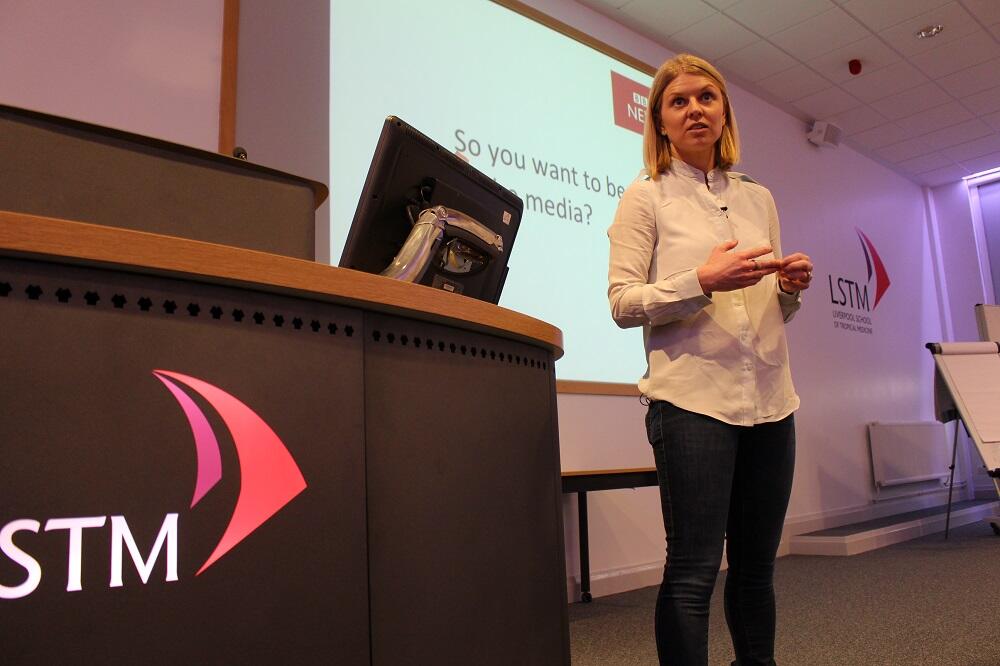
LSTM’s seminar series continued this week with a presentation from Victoria Gill, a specialist science journalist for the BBC. Her talk, entitled: How sciences becomes a story, was introduced by LSTM’s Director of Communications, Diderik van Halsema.
Her informal talk was aimed at encouraging researchers to think about how and when they should work with journalists to communicate their work, pointing out that wider dissemination is now often a criteria of funding applications. She began by explaining her role as a specialist journalist within the BBC and pointing out the different ways in which reporters such as herself picked up on the latest science news. While she utilises social media and websites such as EurekAlert, which highlight the latest academic publications, she stressed the importance of researchers or press officers contacting her directly and allowing plenty of time before the results are made public.
Using a screen grab of the BBC’s news website she pointed out how difficult it is for science stories to break through the ‘noise’ of other news. Currently the news is dominated with large international and political stories, such as the run up to the US presidential election and the Labour Party Conference. However she provided practical tips on how to headline your own research and work in advance with the journalists, ensuring that, where possible, there are filming opportunities to illustrate the work and that researchers themselves are available and willing to be interviewed.
Victoria explained that once a packaged story makes it to the BBC news diary, any footage filmed, along with an explanation of the work and the contact details of the researcher acting as the talking head is available to all of the teams working across the BBC network, in TV, radio and online, working regionally, nationally and internationally via the world service – potentially exposing the story to a much wider and more diverse audience.
She gave a number of tips for anyone acting as a talking head for their research or institution, emphasising the importance of being prepared before media contact. She concluded by playing a few short videos that have previously been broadcast, including examples of her collaborations with LSTM, to highlight the different kinds of packages that can be put together to be played across traditional and newer platforms, such as the smart phones and tablets. Her talk was well received by the audience made up of LSTM staff and students, and there were a number of questions from the floor sparking continued discussion.
A recording of the seminar can be found here: